What is Video Editing: A Comprehensive Guide to Editing Videos
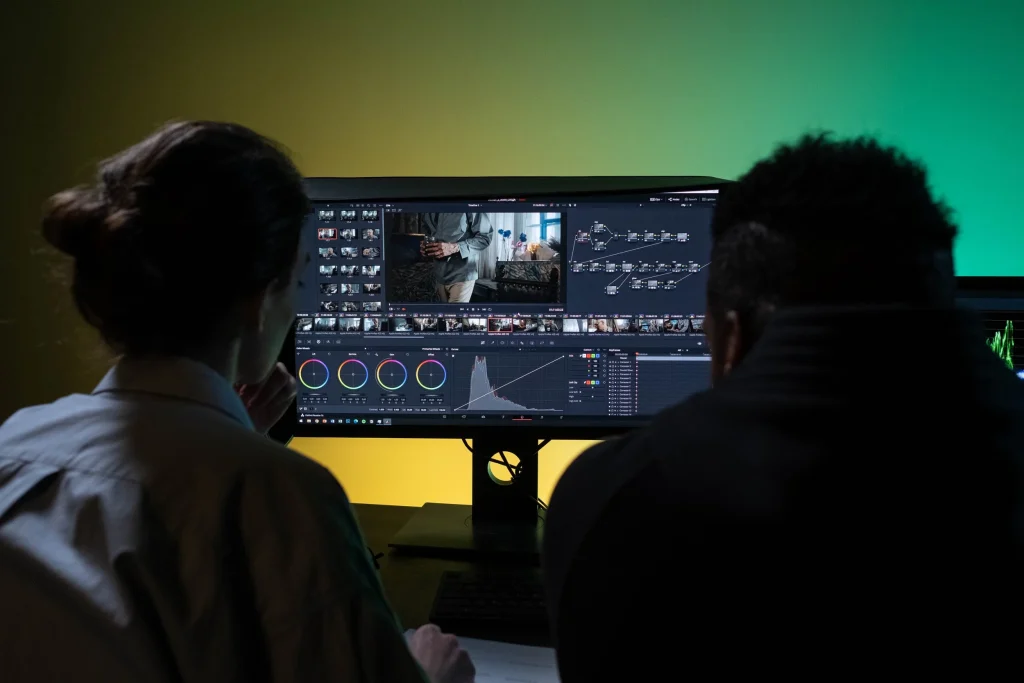
As the digital age progresses, video has become a powerful tool for conveying stories and messages. With an increasing presence of social media outlets and streaming services, what is commonly referred to as ‘video editing’ has grown in scale.
So, what is video editing? Video editing is regarded as a valuable talent sought after in many different industries. In this comprehensive guide, we’ll uncover the basics surrounding video editing and video editing software types that are commonly used by professionals. We will also look at ways to develop editing skills & pursue career opportunities. Finally, we will cover how to become more efficient so you can find success as a skilled video editor.
Key Takeaways
- Video editing is the manipulation of video, audio and graphics to create a compelling visual narrative.
- Video editing requires knowledge of software such as Adobe Premiere Pro or Final Cut Pro, an understanding of storytelling techniques through visuals and sound design, cutting and trimming clips with transitions and visual effects.
- Develop proficiency in video editing via online courses, hands-on practice & networking for career opportunities in freelance or specialized roles. Optimize workflow by organizing your workspace, utilizing keyboard shortcuts, and regular software updates.
Understanding Video Editing
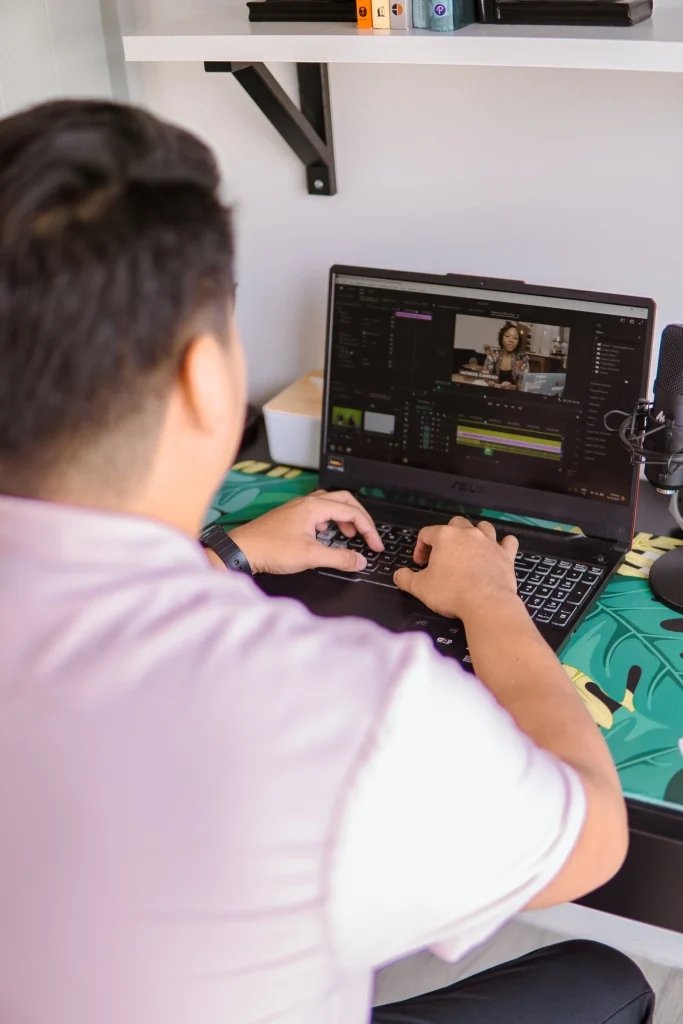
A video editor working on a computer with editing software
Video editing is an essential skill and involves piecing together video clips, audio, and graphics to create compelling narratives. Video editors use software such as Adobe Premiere Pro or Final Cut Pro and export finished videos in different formats for various platforms.
Vidoe editing has has come a long way compared to manual film cutting techniques used in its origins. To understand the art of video editing, it is helpful to see how it developed over time.
The art of storytelling through video
Video editing is a unique art form that relies on the combination of sound, visuals and effects to create an engaging story for audiences. The process involves selecting relevant clips, adding motion graphics and visual effects, to create compelling narratives using video.
Match cuts align visuals for smooth scene transitions and artistic synergy. Skillful video editors combine visuals with sound design to create immersive storytelling experiences that draw audiences in.
Evolution of video editing
The early days of video editing involved a manual practice of cutting and stitching film strips. This was a tedious process of frame-by-frame edits for video editors. The 1950s brought about Video Tape Recorders (also known as VTRs) which resulted in more efficient methods of editing.
Professional grade software such as Adobe Premiere Pro, Davinci Resolve or Final Cut Pro, offers speediness, accuracy, and creativity for video editors when manipulating video data.
Essential Video Editing Techniques
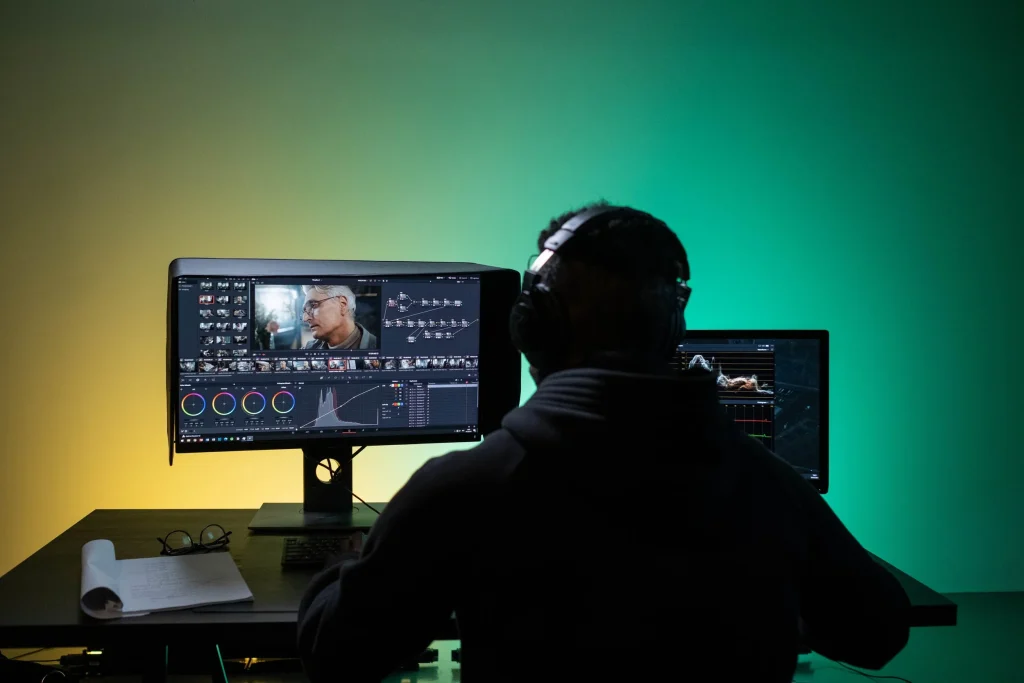
In this section, we will discuss the basics of video editing, including trimming and cutting clips, adding transitions and effects to enhance visuals, as well as managing audio for sound design.
This process begins with importing raw footage into editing software and beginning to lay down clips that will be used in the final video. Video production involves many technical aspects and a good editor will be able to reference pre production notes to ensure alignment with post production outputs.
Cutting and trimming clips
Video editors must become adept at cutting and trimming clips to craft cohesive narratives. This includes selecting a clip and adjusting start and end points with the scissor or trim tool. Editors can fine-tune each video clip to create scenes that contribute to telling a story.
Transitions and effects
Video editors have an array of tools and techniques at their disposal to craft a compelling visual story. Transitions, such as crossfades or dissolves, can create smooth transitions between clips without taking away from the narrative.
Effects like color grading and motion graphics will add texture while helping maintain continuity for an engaging viewing experience that resonates with the audience. Experimentation is encouraged when playing around with these creative elements to build unique visuals tailored specifically for various audiences.
Audio editing and sound design
Video editors can enhance the storytelling in their visuals by delivering an immersive audio experience, utilizing techniques such as sound design to layer various sound effects on top of each other. Dramatic riser or drum sound effects can be used to build tension and support visuals on-screen.
Popular Video Editing Software
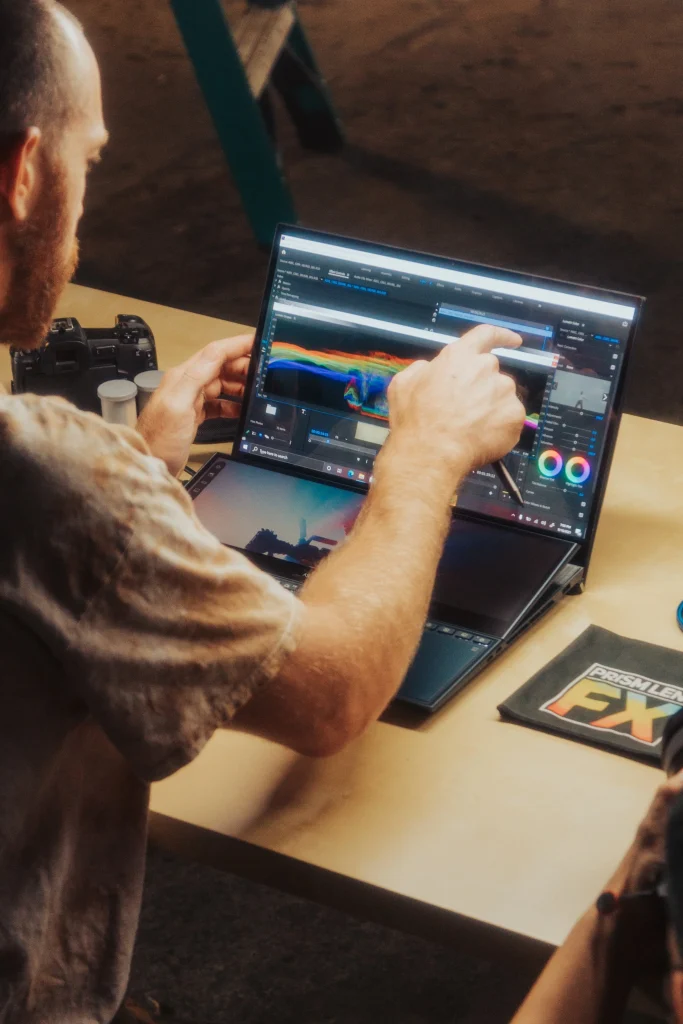
One of your first priorities in the editing process is to choose the appropriate computer and editing software. The market offers a variety of tools with different features, prices, and complexity levels.
To help you out in making an informed decision, let’s take a look at some common options: Adobe Premiere Pro, Final Cut Pro, DaVinci Resolve & Avid Media Composer – all catering to different kinds of users’ needs and project demands.
Adobe Premiere Pro
Adobe Premiere Pro is a great choice for all of your video editing needs. This professional software offers robust features and an easy-to-use interface that makes it accessible for beginners and professionals alike. With powerful capabilities such as AI integration and fast timeline performance, users are sure to get the most out of their videos. Plus, by subscribing to Creative Cloud you can keep your software up to date automatically. Overall, this editing suite solution boasts many impressive features, making it one of the top choices among discerning video editors today.
Final Cut Pro
Many professionals rely on Final Cut Pro. This one-time purchase program offers a user-friendly interface with efficient organization capabilities, various special effects to choose from, and robust color grading features. The major difference between this platform and Adobe Premiere Pro lies in its lifetime access after purchasing, there is no need for recurring fees!
Other notable software
Video editing is a vast space, and Adobe Premiere Pro or Final Cut Pro are both noteworthy tools for video production. Avid Media Composer offers pro-level features and an intensive learning curve for those aspiring to master professional editing techniques. DaVinci Resolve is celebrated for its color-grading capabilities. DaVinci Resolve even has a free version with multiple essential editing features available as well.
Developing Your Video Editing Skills
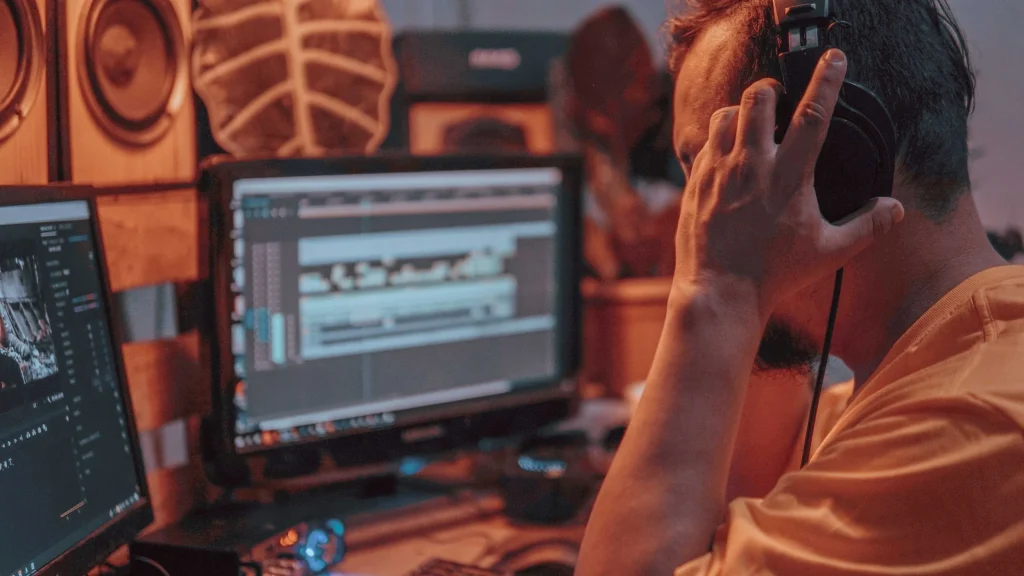
Building proficient video editing skills requires patience, commitment and enthusiasm for constant development. Whether you are just starting out or looking to improve existing capabilities, there are various methods to upgrade your video editing skills.
In this section of the article, we will examine the significance of online courses and tutorials as well as hands-on practice.
Online courses and tutorials
Online courses and tutorials can be a great way to learn video editing skills and software, with many free options available. Popular platforms that offer online training on the subject include: Adobe, Udemy, Skillshare, Lynda.com and the American Graphics Institute.
Hands-on practice
The development of video editing abilities relies heavily on hands-on practice in order to apply the knowledge acquired. Personal initiatives such as creating feature film trailers or short documentaries are beneficial for cultivating an individual’s style and expertise in this field.
Internships can be hugely beneficial by allowing you to make connections with professional editors in your industry while sharpening skills that will eventually open career opportunities.
Freelance projects found through sources like Upwork, ZipRecruiter, Fiverr or Linkedin also provide video editors with the opportunity to practice and learn the art of video editing.
With dedication and persistence, it is possible to improve your editing skills over time!
Networking and collaboration
Connecting with other video editors and professionals in the field can bring tremendous benefits, such as feedback and opportunities for career advancement. By participating in industry events, joining forums/chat rooms online, and connecting via social media, you will build your network of video editing contacts. Working on projects together is also an excellent way to become acquainted with new editing tools & editing techniques.
In addition to acquiring new knowledge, these collaborations could potentially lead to job opportunities or new ventures that can aid in your growth as a video editor! Engaging with like-minded individuals while remaining open to skill development will nurture creativity for aspiring videographers.
Career Opportunities in Video Editing
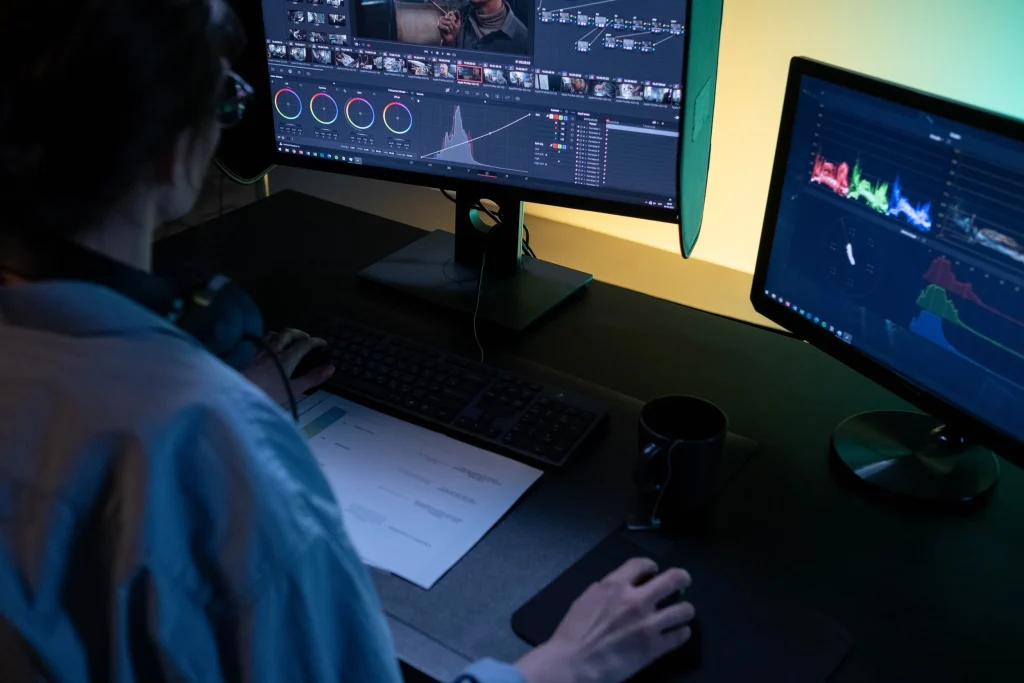
Video editing offers a variety of potential career paths and with the right skills, you can pursue any one of them. In the next section, we will establish an understanding of the various positions available to video editors, the necessary skills for each role, and expected earnings.
Whether your focus is freelancing or working full-time as a video editor, there are many career possibilities such as becoming an in-house editor or choosing to specialize in motion graphics, video effects, and more.
Freelance video editing
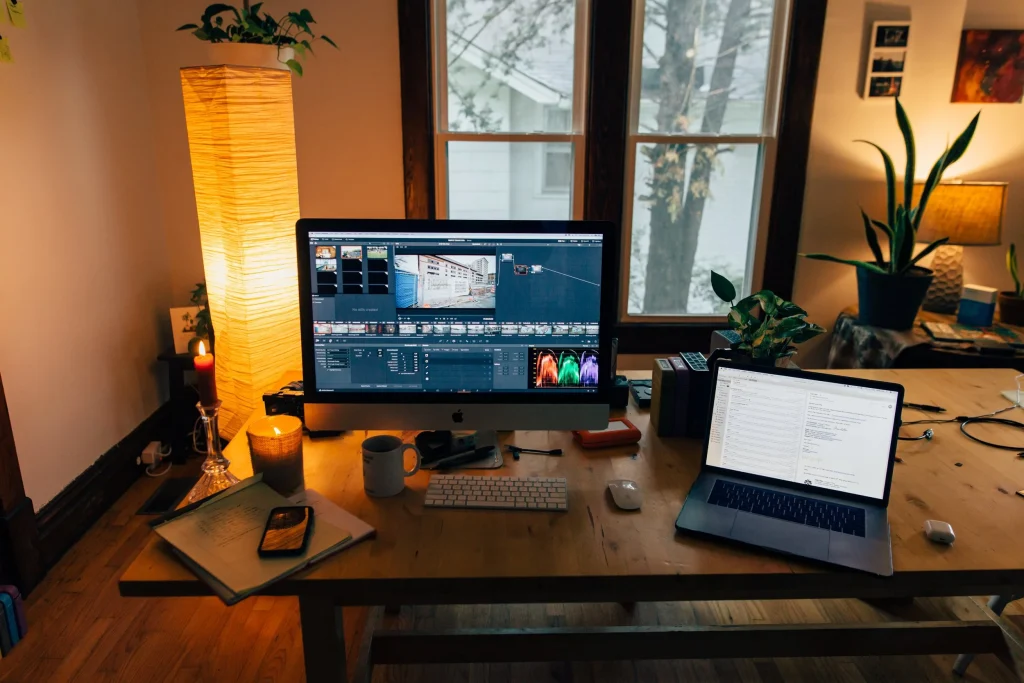
The world of freelance video editing provides a great deal of independence and the opportunity to work on an array of projects from your own home or workspace. To be successful, video editors must have technical skills related to both hardware and software, as well as proficiency with project management and creativity.
The steps towards becoming a skilled professional include choosing your medium, developing solid video editing capabilities, acquiring appropriate educational credentials (e.g., degree), forming an impressive portfolio, and staying up-to-date on industry trends.
Freelancing, despite some challenges such as irregular income flow, lack of benefits, and the need for self-promotion and client solicitation, can offer more opportunities for earning potential and greater flexibility compared to traditional salaried positions.
In-house video editor
As an in-house video editor, it is essential to possess a strong attention to detail and have a passion for editing video and audio. The job consists of artistically combining recorded footage, working collaboratively with the production team, and ensuring quality control. Companies that commonly recruit these editors include advertising firms, educational institutions, or even sports organizations.
Working as an in-house video editor can offer more income stability in addition to benefits. In-house video editors also typically have more knowledge about a brand’s identity, giving them the potential to create better on-brand videos.
Specialized roles
Video editing career paths go beyond freelance or in-house jobs. There are various specializations that can bring exciting challenges and growth prospects. For example, motion graphics designers specialize in designing captivating animations for digital media channels, while colorists work to adjust the video exposure and colors into a desired aesthetic.
Sound design is another subcategory of video editing where individual sound effects and recordings are layered together to support visuals on-screen. Musical scores are often incorporated as well. Mastering any of these skills can eventually lead to establishing your own niche within the industry.
Tips for Efficient Video Editing

Efficient video editing is crucial to meet deadlines, maintain high-quality output, and have a satisfying work experience. This guide section will cover ways to optimize your video-editing workspace, use video editing software shortcuts, and keep your software and hardware up to date to enhance your productivity.
Organizing your workspace and assets
An orderly system for organizing your workspace and video assets can significantly enhance your editing productivity. Having a clear file and folder structure makes it effortless to find what you need.
Setting up a video backup workflow and making use of project management software guarantees that all of your projects will remain secure while also helping to streamline the entire editing process.
Keyboard shortcuts and customizations
Taking advantage of keyboard shortcuts and customizations can facilitate your editing workflows, enabling edits to be carried out swiftly. Get acquainted with the popular keyboard hotkeys that suit your specific needs best. You’ll also help relieve stress on hands and wrists!
Common shortcuts in Premiere Pro include using the ‘JKL’ keys for playback control, C key for razor tool access, and Ctrl+A (or Mac’s Cmd + A) for selecting all items at once.
Regularly updating software and hardware
Keeping your video editing software updated is essential for optimal performance and the latest features. Updates can provide you with increased efficiency, additional features, and bug fixes, which could lead to faster rendering times and smoother playback while editing videos.
Investing in newer hardware such as a fast CPU or GPU and sufficient RAM will ensure your system has enough power to handle modern video files and demanding video editing applications.
Summary
To become a successful video editor, you must be dedicated and passionate. It is important to understand the fundamentals of editing, master various techniques, research popular software options and continue improving your skills through ongoing education and hands-on practice.
Frequently Asked Questions
What is video editing?
Video editing is the process of arranging video clips to produce a compelling video. This includes cutting pieces, adjusting sound mixing, introducing visual effects and making other technical adjustments.
What is the purpose of video editing?
Video editing plays an essential role in establishing an emotional bond between audiences and video content. Consequently, it has become one of the most important roles in post production.
What are the three types of video editing?
Video editing can be broken down into three distinct types: linear, non-linear and online. Each offers unique advantages that make them suitable for a variety of tasks. They all have their own pros and cons which should be considered before choosing one over the other.
What are the essential techniques in video editing?
When editing videos, the basics consist of cutting and trimming clips, adding transitions and effects, in addition to working on audio design for the final polished product.
